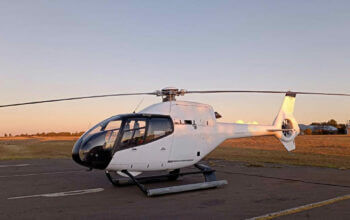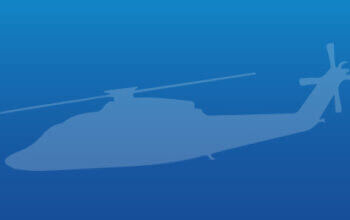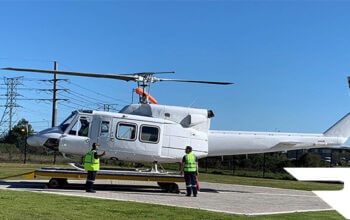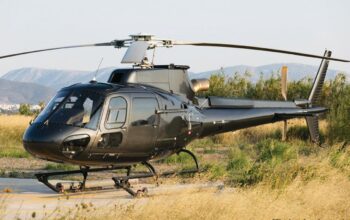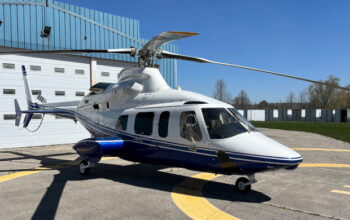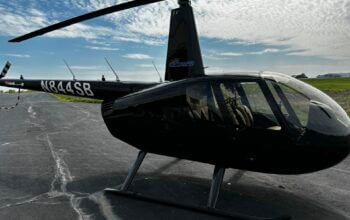Estimated reading time 12 minutes, 9 seconds.
Design work is underway on a complex program that will deliver 16 almost-new CH-149 Cormorant search-and-rescue (SAR) helicopters to the Royal Canadian Air Force (RCAF) over the next six years.
Leonardo UK, the aircraft manufacturer, and IMP Aerospace and Defence, the in-service support partner for the CH-149 fleet, are currently completing the digital design development on a mid-life upgrade for the aircraft. This will ultimately involve an extensive overhaul of the 22-year-old airframe, to bring it up to the same standard as the new Norwegian AW101-612 All-Weather Search-and-Rescue Helicopter.
“There are Canadian-specific requirements,” explained Dominic Howe, campaign manager in Canada for Leonardo Helicopters. “Those have all now been introduced and we’re continuing through that [design] process and getting ready for build in the near future.”
Just before Christmas 2022, following a lengthy and at times contentious negotiation, the federal government concluded a contract with Leonardo to deliver three new Cormorants, a variant of the AW101, and upgrade various systems, sensors, engines, and other components on the RCAF’s remaining 13 CH-149s, known as the Dash -511, to match most of the capability of the Norwegian AW101-612, which entered service in 2020.
The government opted to upgrade the heavily employed SAR helicopters to the Norwegian standard rather than replace the entire fleet because “using this already-established configuration accelerates the project considerably,” Public Services and Procurement Canada stated when the department and the RCAF began negotiations with Leonardo in 2018.
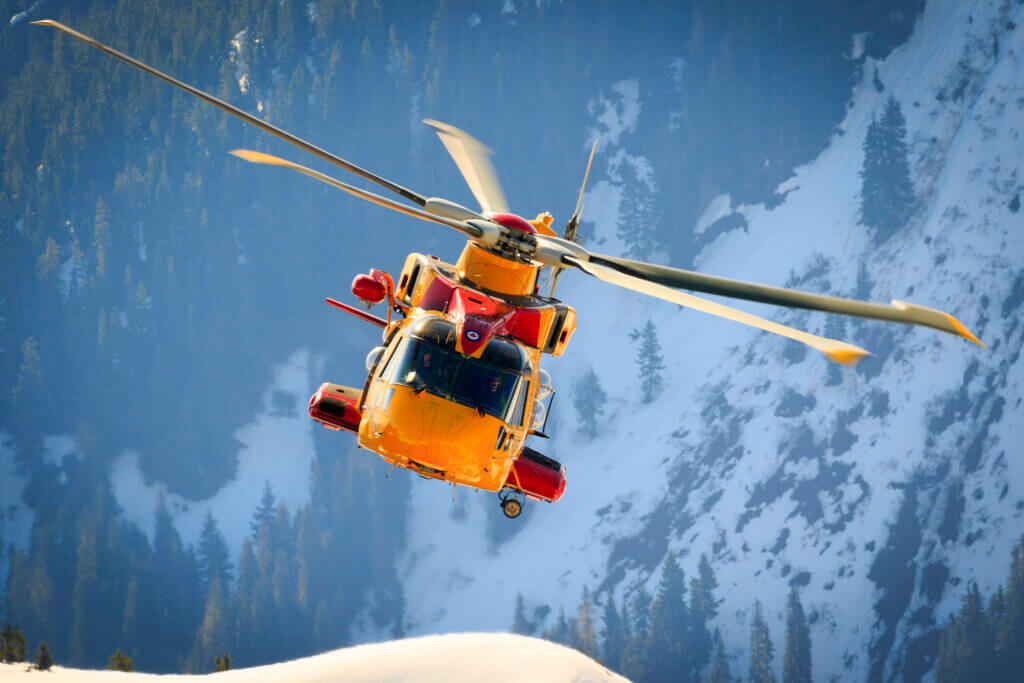
The Air Force had hoped to expand the fleet to as many as 21 aircraft, but the increase to 16 with three new airframes means the RCAF can still meet a key objective of returning the Cormorant to 424 Transport and Rescue Squadron at 8 Wing Trenton. Since 2005, the squadron has responded to SAR calls in central and northern Canada with five CH-146 Griffons, a variant of the Bell 412.
The upgrade will include reusing components from the current CH-149 airframes as well as from nine VH-71 helicopters — also a variant of the AW101 — that Canada acquired for spare parts in 2011 when the U.S. presidential helicopter program was cancelled. While the VH-71 airframes are no longer airworthy, components, including control surfaces, transmissions, and General Electric 3,000 horsepower CT7-8E engines can be repurposed.
Leonardo U.K. will build three new airframes at its production facility in Yeovil. Upgrades to the remaining 13 and final assembly of certain systems on the three new aircraft will be completed by IMP at its Nova Scotia facility near the Halifax Stanfield International Airport. Even the new builds will use some donor parts from the Dash 511 and VH-71 fleets.
The overhaul will include new avionics and wiring throughout, but will “utilize the high value components from not only the existing [Cormorant] fleet, but also the ex-U.S. presidential aircraft: engines, main gearbox, tail gearbox, the undercarriage — all those large mechanical items will still very much be used,” said Howe.
Both Leonardo and IMP have surveyed the VH-71 inventory of components “to look at [their] status,” added Clark Bain, IMP’s senior vice president of strategic development, “and then Leonardo has done a lot of work on the engineering side to say, how do we take [them] from the current 511 fleet … and then modify them … to go on to the 612.”
By limiting the Canadian-specific modifications to “some interior customizations and some small amendments to the communications equipment,” Howe explained, Canada is gaining the “benefit of a low-risk solution. Some of it has already been designed, developed, certified by an independent third-party certification board. So, it’s really a case of then just applying these small changes for Canadian content.”
“I think it will be almost indistinguishable from a truly newly built aircraft,” Major Brett Banadyga, operation requirements manager for the Cormorant Mid-Life Upgrade (CMLU) project, told Skies earlier this year.
To be as efficient as possible, IMP will assemble the donor components modified and repaired by Leonardo and “run this like a production line,” rather than a modification line, “which will very much mirror Leonardo’s new aircraft production line,” said Bain.
“All the lessons that Leonardo has learned over decades of building helicopters will then come across to Canada, and be embodied in the Canadian production line,” he said. “The only difference is, it’s a mix of both new, modified and refurbished parts.”
IMP has begun preparing tooling, jigs, fixtures and test tools for the CMLU line and will soon send people in phases to Yeovil to train on the Leonardo line. “They’ll then bring those skills back to Canada … and train the rest of the workforce to operate on that production floor,” said Bain.
The companies are banking on their collective history with the airframe — as manufacturer and in-service support provider to both the current fleet and CLMU program — to manage risk, as the helicopters are withdrawn and then returned to service. IMP, in particular, has detailed knowledge on where each aircraft is in its maintenance cycle.
“The dance of when you retire an aircraft, when you pull spares out of supporting the current fleet, to then go into the production for the new fleet, is really complex,” Bain said. “And it’s only by the fact that we both sit on both sides of that, that it works.”
The process will mirror the current practice for component repair, added Howe. “When a gearbox needs to be repaired, overhauled or modified, it goes back to Yeovil, for example. IMP has workshare that they will also undertake. So, it is complicated, but it’s actually following [a] process that’s been in place for 20 years.”
The CMLU program could also inject more predictability into the supply chain, he suggested. If maintenance has at times been managed “on an ad hoc basis” as individual helicopters require component repair and replacement, the upgrade program will provide greater “advanced visibility” on the need for components as Cormorants are pulled from service to begin their overhaul. “That allows the supply chain to ensure that they have everything all in place to support that process,” said Howe.
The first three aircraft, all new builds, will be produced in Yeovil and should be on the IMP production line in 2025. They are expected to be delivered to the RCAF in 2026, and sent to 19 Wing Comox, British Columbia, to allow the RCAF to begin initial crew training, pilot conversion, and some operational test and evaluation of the new capability.
The next deliveries, beginning in 2027, will go to 14 Wing Greenwood, Nova Scotia, then 9 Wing Gander, Newfoundland, and finally 8 Wing Trenton, Ontario. The fleet is expected to be fully operational by 2029 and operate into the 2040s.
“That whole process has to be managed very carefully – we can’t allow SAR to fail,” said Howe. “That is the fundamental backbone in this project. Those first three aircraft … enable us to [bring them] into service so we’re not reducing the full fleet.”
By modifying the Cormorant to a variant already in service, the RCAF should also be able to reduce its certification timeline. “We’re going to be leveraging … independent third-party certification for Canada,” he said. “Those conversations have already commenced between stakeholders.”
After 21 years of supporting the CH-149 fleet, IMP is familiar with issues that have disrupted the airframe, such as parts obsolescence and corrosion due to low-level operations over saltwater. Bain said IMP’s lessons, as well as those of Leonardo and the air force, “have been feeding their way into the new designs that Leonardo is putting together. The 615 is going to embody a lot of the lessons we learned 10 to 15 years ago on the 511 fleet. You’re seeing the benefit of the Canadian experience coming back to Canada again.”
“A simple example is how the seat rails are configured and coated and protected. There’s a whole raft of little things like that that are now in the design of the 600 series that were not in the 500 originally. Not only is Canada getting the benefit of that, all the 600 users are getting that because it was fed back into the system.”
While the RCAF has opted to forego the Leonardo Osprey AESA radar and LiDAR (light detection and ranging) system that are part of the Norwegian 612, the Cormorants will incorporate a L3 Harris WESCAM electro-optical/infrared system and introduce a Smith Myers ARTEMIS mobile phone detection location system.
Most of the other systems are the same, including advanced autopilot and full authority digital engine control. Avionics upgrades will include a more integrated, large screen glass cockpit with moving map display, a terrain avoidance and warning system, synthetic vision, and a significantly improved weather radar. The primary difference is the cabin configuration, said Howe, as the two countries have different concepts of operations for conducting SAR and how they employ their flight engineer or sensor operator.
This article was originally published by Skies’ sister publication, Vertical Magazine
